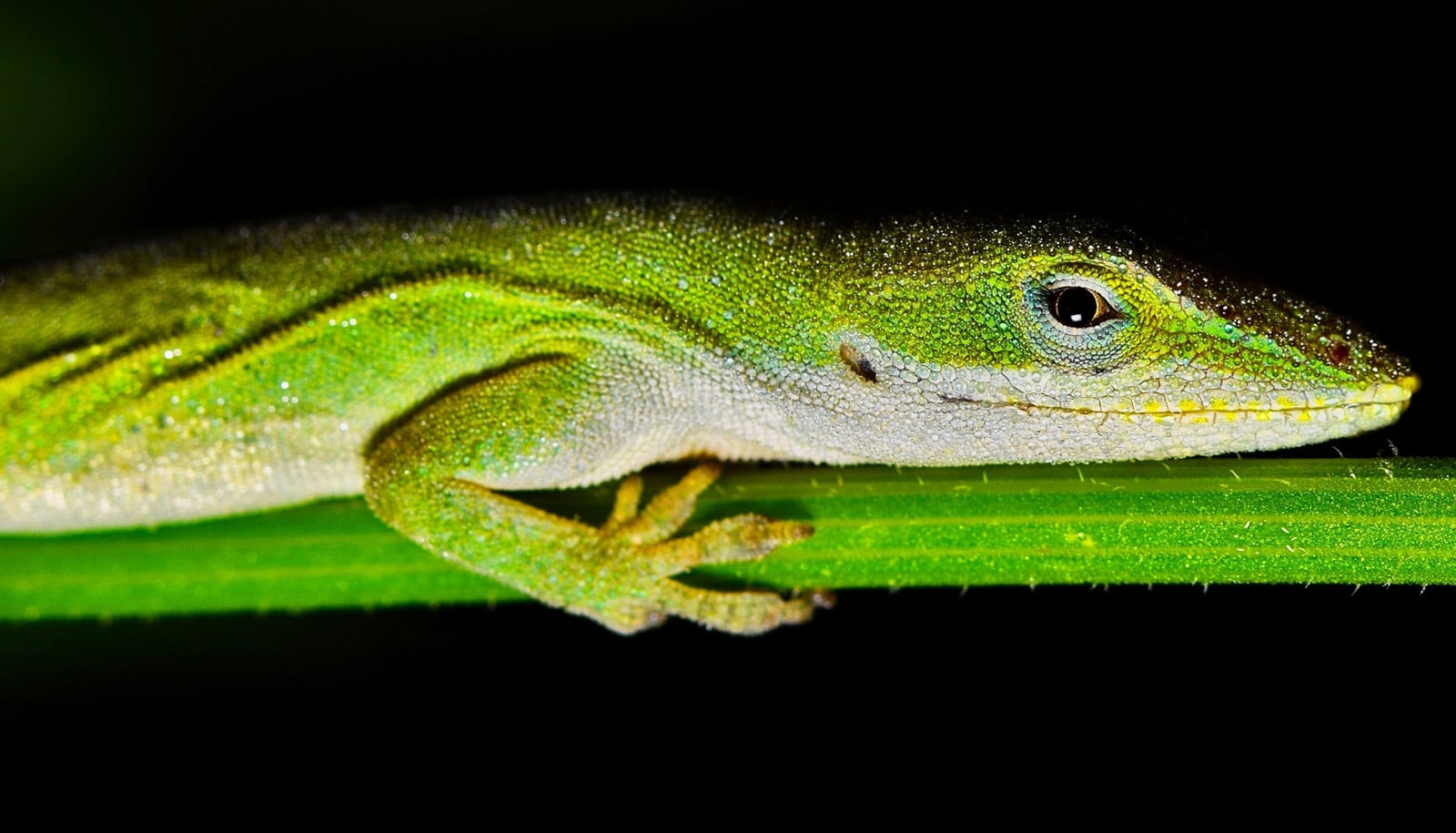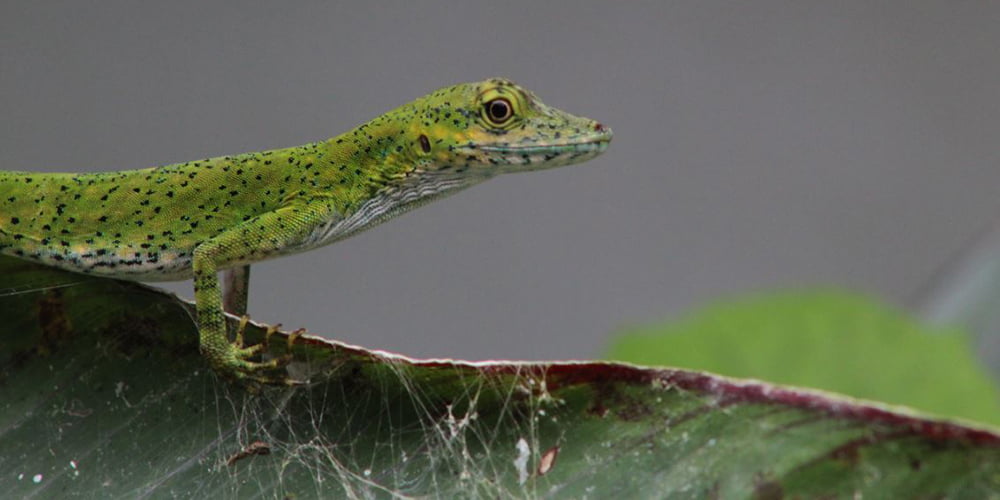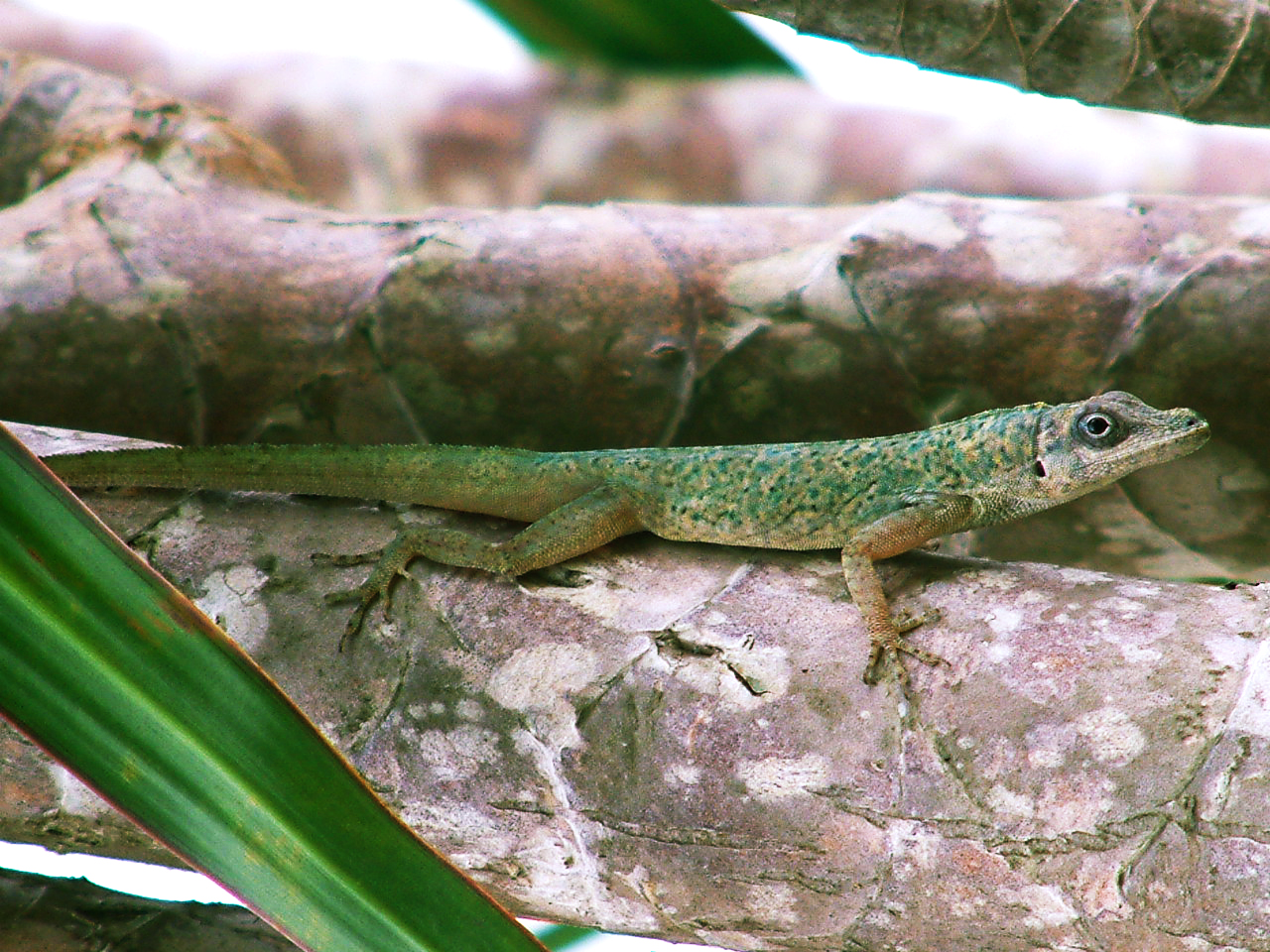Vaneisa Baksh is an editor, writer and cricket historian for the Trinidad Saturday Express. She’s written two essays on the local lizards and along the way has chided up herpetologists for not responding to the first one. Let’s get to work!
First she writes several weeks ago, in an article entitled “The LIzards Running Up and Down”:
The first time I heard the sound, I thought a bird had flown into the house, although none of my regular feathered folk chirped like that. I searched and searched, remembering how one time a little dove had come in and had been frantically trying to escape while I tried to guide it to the open window in the kitchen. My efforts were just increasing its anxiety and I had to leave it alone to simmer down until it mercifully found its way to freedom.
This time, there was no bird and eventually, as the sound repeated itself, I spotted the culprit. It was a lizard, a gecko, and although we have co-habited in different houses since I was a child, I’d never heard one of the buggers speak. That was a couple years ago, and curious to know if this was a mutation of the creature we called “24-hours” on account of the myth that if it fell on you, it would stay there for an entire day, I went looking for information.
It turned out that these are really house-loving critters. They prefer to be indoors and are harmless, and might even be regarded as useful. I learned that they feed on insects, cockroaches, termites, wasps, flies, spiders, moths and poor butterflies. I’d decided that I would just have to get used to the unusual sound—the most apt description on Wikipedia was “tchak tchak tchak”, which it said was often sounded six to nine times in sequence. I have a way of seeing words in shapes, and maybe sounds as well. Every time I hear the gecko chirp, I would see the sound like a fairly squared-off pellet. Perhaps it is because the sounds are evenly pitched and last for roughly the same length of time. I don’t know, but I have tried to get used to it suddenly rapping into my consciousness.
At first, it was restricted to my bedroom and my study, but now it seems the lizards are everywhere. Whereas I found it an occasional interruption, now I feel there are colonies of them living in my house and even though I hardly see more than one at a time, I feel that they have taken over.
It is one thing to adjust to the sound they make—tchak tchak tchak is far more bearable than the abrasively loud grinding from the welding next door—but these discreet urban dwellers leave their little droppings everywhere. Everywhere. Not only do I have to clean them off the floors, especially at the base of the walls, but the area that really trips me is by my bedside table and on my bed. Yesterday, I washed my sheets and replaced them. As I prepared to turn in last night, I spotted the droppings on the edge of the bed. I suppose that’s why I am bringing them up now.
I would dearly like to know if other householders are experiencing this increased presence that is now forcing a whole different level of housekeeping. I have been getting faint whiffs of urine as well, and it drives me crazy, because I am washing cushion covers, curtains, sheets, everything that could be contaminated, and mopping the floors far too often.
It’s not just being finicky, which I am, but for some time now, my eyes have been unusually sensitive and gritty. While it is true that I am spending a considerable amount of time reading and writing in front of various screens, and that the presence of Saharan dust has been exacerbating things, my ophthalmologist says there is evidence of some kind of persistent irritant, or allergy affecting my eyes.
Naturally, I am mindful that it is possible that the creatures overhead who seem to like my bedroom might be doing numbers over my bed and that might be messing with my eyes. I am not trying to gross anyone out, it just seems that it is likely that there is a growing population of the lizards, which I think we also call woodslaves, and that while we might be adjusting to their presence and their noises, we might not be aware of the side effects.
I’ve never had a problem with lizards. When we were children, the whole brood of about 15 to 20 cousins on any given night would gather in my grandfather’s living room to look at television shows because nobody else had a TV.
We’d start streaming in when the news programme, Panorama, began at seven o’clock. That was when he would turn on the black and white beauty with the wooden cabinetry. Afterwards when some other show began (the real reason we were there), he would sit there with us, and if there was any sign of anything remotely inappropriate for us, like a kissing scene, he would suddenly exclaim, “Look, look, look, the lizard up there!” Naturally, we would all momentarily turn our heads away from the screen at the unexpected shout. Sometimes there was a lizard, but more often not, and he would say, “Ah, he run away!” But his distraction worked well enough, or so he thought.
Harmless enough.
But I feel something has changed. There are more, they are loud and though they love being indoors, they are not house-trained! This might sound creepy though I say it in jest, what if I am now the interloper in the house of the lizards?
—Vaneisa Baksh is an editor, writer and cricket historian.
E-mail: vaneisabaksh@gmail.com
And then Vanessa writes yesterday in “Welcome to the Lounge of Lizards”:
I’D hoped that bringing up the ungovernable appearance of house lizards might have elicited a response from a couple of herpetologists. Disappointingly none came; but many people shared their experiences and theories. There was much to learn from these personal stories, and they broadened my sense of community, so I want to share some titbits from a few.
I mean, here we are, locked down in our separate cubicles, not knowing anything about one another, and suddenly, we are sharing lizard tales, revealing snippets of our lives that tell us something about daily trials we have in common. It’s not something we’d chat about, and noticing that our traditionally unobtrusive house mates have become loquacious would hardly qualify as a subject for conversation—unless you have physical visitors and the lizards are contributing their five cents to the discussions. Innocuous things have to force themselves unto your radar—usually by causing some disruption—before they register on your consciousness. Like the jiggly latch on a window that you notice every time you open or close it, but never outside that moment.
Curious if these chirpy critters were mutants or had just been imported, I read of work done by Jonathan Losos, a professor of evolutionary biology and a herpetologist, whose research is mostly concerned with how lizards interact with their environment and how they have diversified. Apparently they have focused on the “evolutionary radiation” of Caribbean Anolis lizards, among others, but they are also looking at how species are adapting to urban environments.
One related study examined the impact of an invasive anole species in Dominica. Up until two decades ago, it was home to a single species until a second species arrived tucked inside a shipment of lumber. Not hard to imagine our lizards coming in by sea. I remember landing in Nevis on one of those small aircraft and as we disembarked, a scorpion scurried down the aisle as soon as the door was opened. Naturally, passengers let the hustler disembark first.
A 65-year-old reader sent this: “Our first house was a small ‘board-house’ with a thatched roof and termite-ridden boards. I could knock on a board to find out if it was termite-eaten by the hollow sound that emanated. Prying into the thin cover, I would find the hollow cavities. Here the house-geckos laid their eggs. Unfortunately, sometimes I would remove the eggs. The old Indian people used to call them ‘bistooyas’, the ones about three inches long, sometimes with white stripes from their eyebrows to the body.”
Quite a few people said they had been hearing the noises but couldn’t figure out the source, assuming it was some kind of night bird, and some thought they were alone in this experience.
One person said that around the same time they began hearing those sounds they noticed that “my eyes felt like I had nits in the base of my eyelashes, and the attendant discomfort… At the same time, I had noticed a reduction in small spiders, spider’s webs, and mosquitoes”.
A woman of the West included a delightful description of the upsurge of geckos. “There’s quite a lot of courtship going on between pairs, appropriately, in our bedroom, and each pair seems to play tag, with a pursuer and its quarry. Inevitably, though, they come to an agreement and tiny baby lizards pop up soon after.” She doesn’t mind them, she says, but most of the women harbour strong feelings.
“I detest those creatures. They are annoying. They feed on the insects in the house. If by chance I should see one within easy reach, I implore my husband to get rid of it, and he would hold it using a piece of cloth and throw it outside. He doesn’t harm them,” said one.
A few mentioned that peppermint infused with water makes a reasonable repellent. One had specific directions: peppermint oil may be used by soaking cotton balls and placing them on the top of shelves, inside closets, behind books and similar places. I prefer using a spray bottle, measuring half water and quarter oil and spraying in the same places. It’s been keeping them away so far and the smell becomes less pungent after a few days.” Another said she had tried it, but is worried about the larger implications.
“There is something amiss in the ecosystem. This, what can only be described as an infestation, is a new phenomenon. Is this a new and invasive species or has this lizard been blessed by depleting stock of its natural predators? I do think it is something which the scientists need to investigate. Is there something more sinister at work? And what are the implications? I have always been leery of lizards. Their presence disconcerts me. And now this is like living in some kind of mild horror story—in my own house! Lizards pop up everywhere—in the vegetable basket, in the clean-clothes basket, drop from the roof. One found its way into my glass of water; fortunately, I looked down before I sipped!”
Another said, “I agree with you totally on all that you said, and I believe that these creatures are being used for sinister purposes.”
I don’t know about that, but I enjoyed learning more, like discovering that a group of lizards is called a lounge. I imagine them lounging about our homes and I figure what better place for a lizard to lime than this country!













![A male green anole flashes its dewlap in a territorial display. Males flaunt the red throat fan to challenge other males. [Photo by Tom Jenssen]](https://i0.wp.com/www.gannett-cdn.com/presto/2021/04/27/NTTN/6cd12f55-47f2-44a2-9328-c9ab58ededa9-05-02-21_Anolis_carolinensis_Tom_Jenssen.png?w=629&ssl=1)
